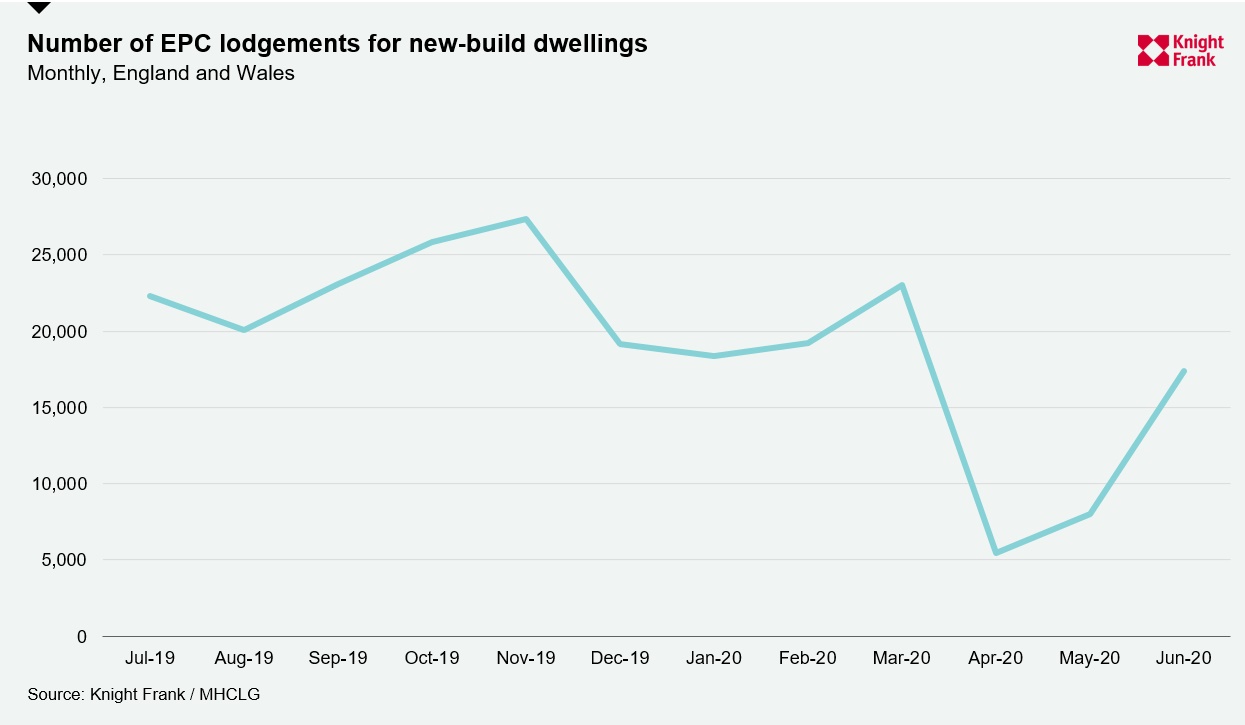New housing delivery showing signs of improvement
The number of Energy Performance Certificate (EPC) lodgements for new-build properties increased in May and June, following a sharp drop in April 2020.
1 minute to read
Just 30,893 Energy Performance Certificates (EPCs) were issued for new homes between April and June, 54% fewer than in the same period of 2019, according to data from MHCLG.
The data suggest that April will mark the low point for new housing delivery, in line with the peak for construction site shutdowns as a result of the ongoing covid-19 crisis.
On a monthly basis, the number of EPC lodgements for new properties in April 2020 dropped by 76% compared with the previous month, from 23,037 to 5,460. New-build lodgements have since recovered somewhat, rising to 8,039 in May and to 17,394 in June.
A pick-up is likely to reflect the fact that construction on the vast majority of suspended development sites in England and Wales has restarted. The focus has been on completing homes nearing completion, or where existing customer orders exist.
What happens to sales values and volumes in the coming months in the wider housing market will determine the longer-term outlook for new housing delivery. News that The Verdean, one of London’s first development launches post-lockdown, was 90% reserved in the first three days of launch should, therefore, give some confidence about the strength of demand.

EPC data has, in the past, proven to be a reliable forward indicator of net supply given the requirement in England and Wales to apply for a certificate once a property is built.
The latest figures suggest that annual delivery over the 12 months to June has slipped from 255,000 in March, its highest point in decades, to 229,365. The government target for housebuilding in England is 300,000 new homes per year.
Our expectation remains that private housing delivery across the UK in 2020 will be around 35% less than the previous year.